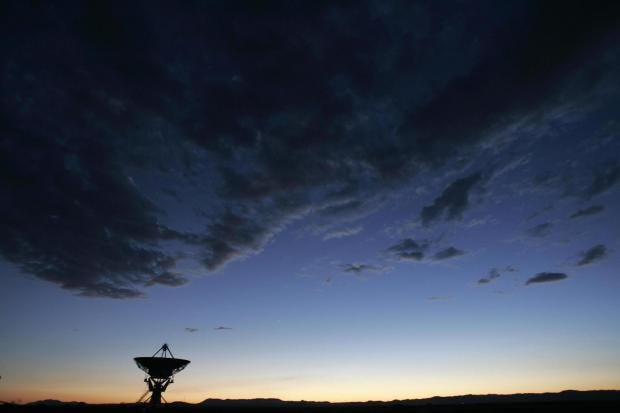
A mysterious signal coming from deep in the universe has finally been traced to its source.
Fast Radio Bursts, or FRBs, have only been heard 18 times and have been a puzzle to scientists since they were detected in 2007. Nobody knows where they could be coming from or how they might be triggered, with speculation ranging from a huge star, jets of material shooting out of a black hole – or even aliens.
FRBs are powerful but very short radio waves, which last no more than a millisecond.
The first was found by Australia's Parkes telescope in 2007. Since then, 17 have been heard, but only one of them has been heard repeatedly.
That repeated burst was studied for six months, letting scientists find its exact position in the sky. It seems to be coming from a faint dwarf galaxy more than three billion light years away, scientists said.
FRB 121102, as it is referred to, was found using the Very Large Array. That is a multi-antenna radio telescope operated by the US National Science Foundation.
Dr Shriharsh Tendulkar, a member of the team from McGill University in Montreal, Canada, said: "Before we knew the distance to any FRBs, several proposed explanations for their origins said they could be coming from within or near our own Milky Way galaxy. We now have ruled out those explanations, at least for this FRB."
Adding to the mystery, the FRB appeared to be accompanied by a stream of ongoing, persistent weaker radio emissions.
Further high precision observations showed that the two emission sources could not be more than 100 light years apart, said the scientists whose findings appear in the journals Nature and Astrophysical Journal Letters.
Dr Benito Marcote, from the Joint Institute for VLBI (Very Long Baseline Interferometry) in Dwingeloo, the Netherlands, said: "We think that the bursts and the continuous source are likely to be either the same object or that they are somehow physically associated with each other."
What produced the FRB remains unknown. One likely candidate is a super-dense neutron star - possibly a "magnetar", a neutron star with a very powerful magnetic field - surrounded by debris from a stellar explosion.
Alternatively, the source could be jets of material shooting out from the rim of a supermassive black hole.
Co-author Dr Shami Chatterjee, from Cornell University in the US, said: "Finding the host galaxy of this FRB, and its distance, is a big step forward, but we still have much more to do before we fully understand what these things are."
The research was presented at the American Astronomical Society's annual meeting in Grapevine, Texas.

No comments:
Post a Comment